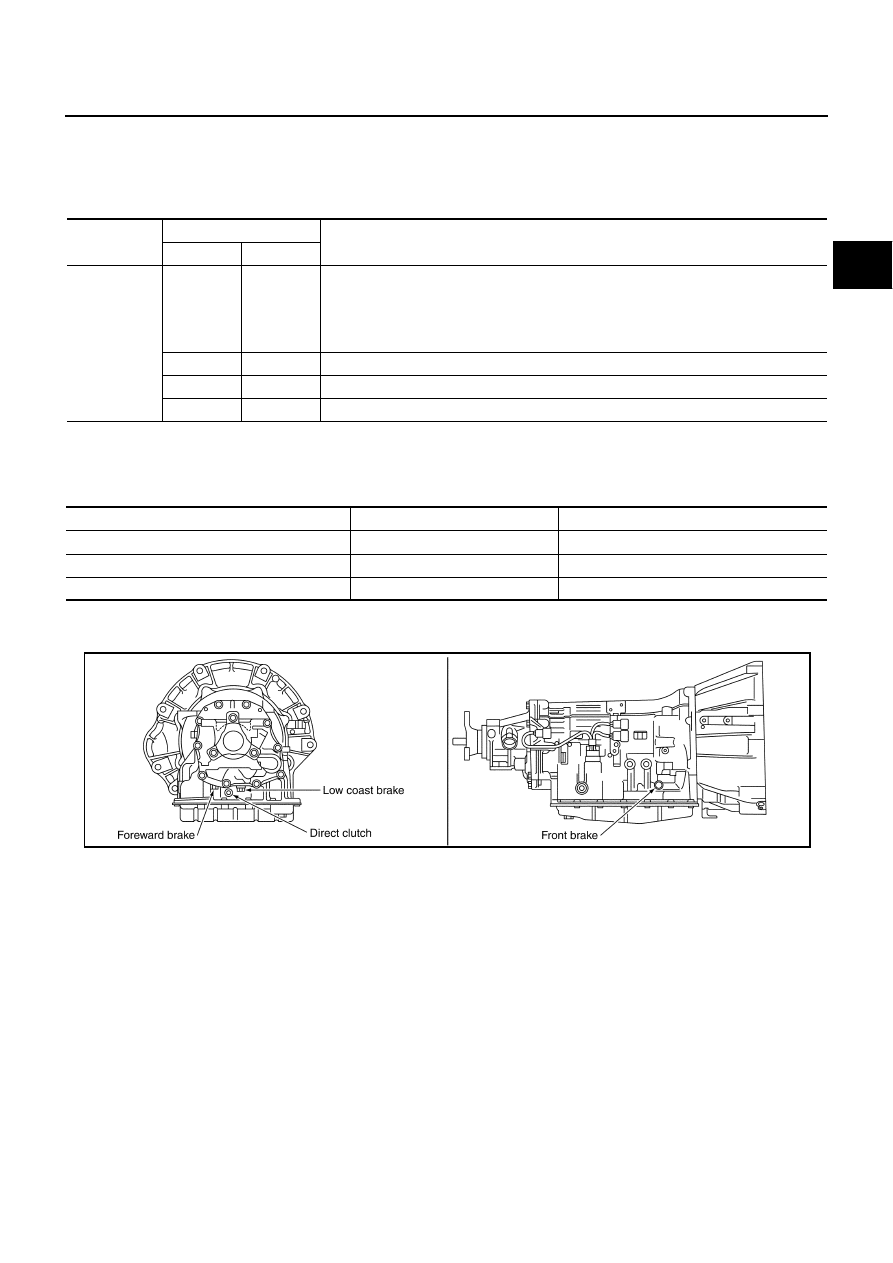Infiniti M45 (Y34). Manual - part 42

TROUBLE DIAGNOSIS
AT-53
D
E
F
G
H
I
J
K
L
M
A
B
AT
CAUTION:
Run the engine at idle for at least one minute.
Judgement Stall Test
O: Stall speed within standard value position
H: Stall speed higher than standard value
L: Stall speed lower than standard value
Stall test standard value position
LINE PRESSURE TEST
Line Pressure Test Port
Stall speed:
2,300 - 2,600 rpm
Selector lever position
Expected problem location
“D”, “M”
“R”
Stall rotation
H
O
●
Forward brake
●
Forward one-way clutch
●
1st one-way clutch
●
3rd one-way clutch
O
H
●
Reverse brake
L
L
●
Engine and torque converter one-way clutch
H
H
●
Line pressure low
Does not shift up “D”, “M” position 1
→
2
Slipping in 2nd, 3rd, 4th gears
Direct clutch slippage
Does not shift up “D”, “M” position 2
→
3
Slipping in 3rd, 4th, 5th gears
High and low reverse clutch slippage
Does not shift up “D”, “M” position 3
→
4
Slipping in 4th, 5th gears
Input clutch slippage
Does not shift up “D”, “M” position 4
→
5
Slipping in 5th gear
Front brake slippage
PCIA0017E